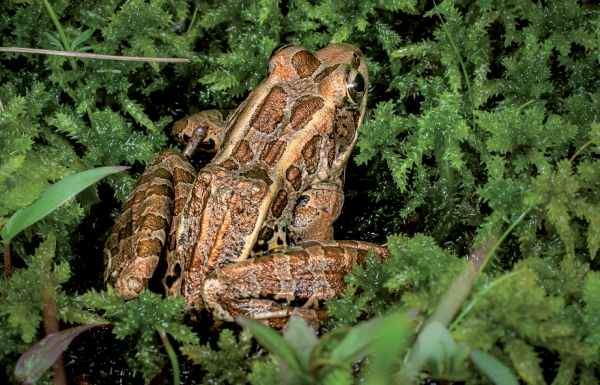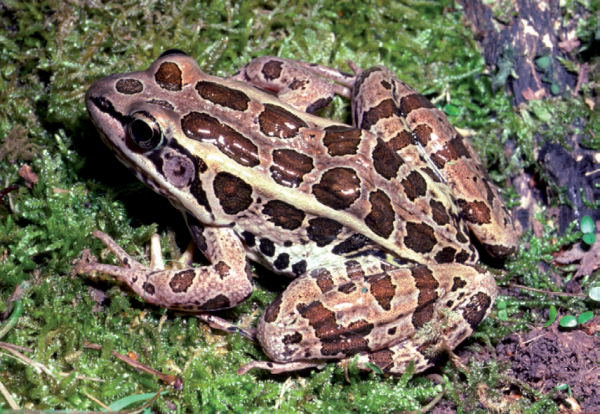Pickerel Frogs (Lithobates palustris) are found throughout Virginia, except for the extreme southeastern corner. These frogs have chocolate brown, squarish blotches arranged in two rows down their back. Conspicuous lines (known as dorsolateral folds) line each side of the frog’s back. A distinctive, but hidden feature of the Pickerel Frog is the yellow or orange color on the concealed, inner surface of their thighs.

Pickerel frog © Steven Johnson
These spotted frogs may be confused with the Southern Leopard Frog, so to tell these species apart, look to see if there is a white spot in the center of the frog’s tympanum (the circular eardrums on the sides of the frog’s head). Pickerel frogs do not have a white spot in the tympanum, while most Southern Leopard Frogs do.
Pickerel Frogs primarily eat a diet consisting of insects, spiders, and other small arthropods. These frogs protect themselves from predators by producing a toxic skin secretion. This secretion is merely irritating to humans, but very few snakes will eat Pickerel Frogs.

Pickerel frog © Steve Roble
During summer, Pickerel Frogs are found far from water in grassy fields or weed-covered areas. In their breeding season, April-May, Pickerel Frogs congregate in large numbers around breeding sites, including swamps, slow moving streams, ponds, and wet meadows. During this time, the females lay clusters of up to 3,000 eggs in a gelatinous egg mass.
The call of the Pickerel Frog sounds like someone snoring! It can be given from both above and below water.
Play the sound file below to hear the snoring call of the Pickerel Frog.

